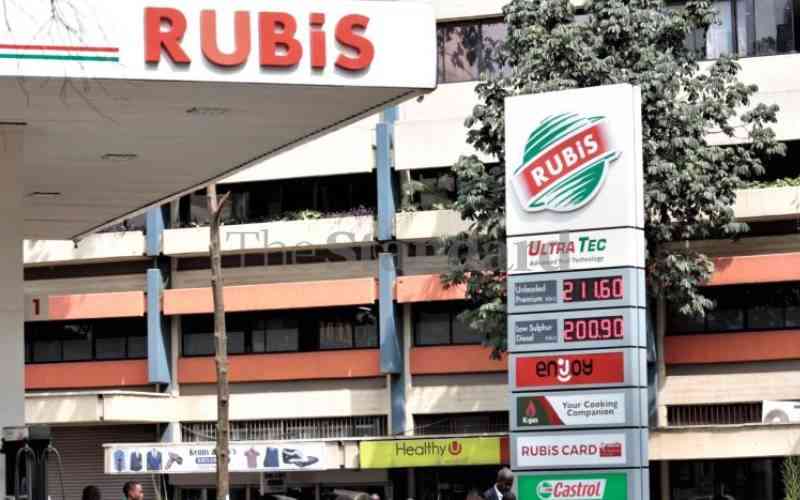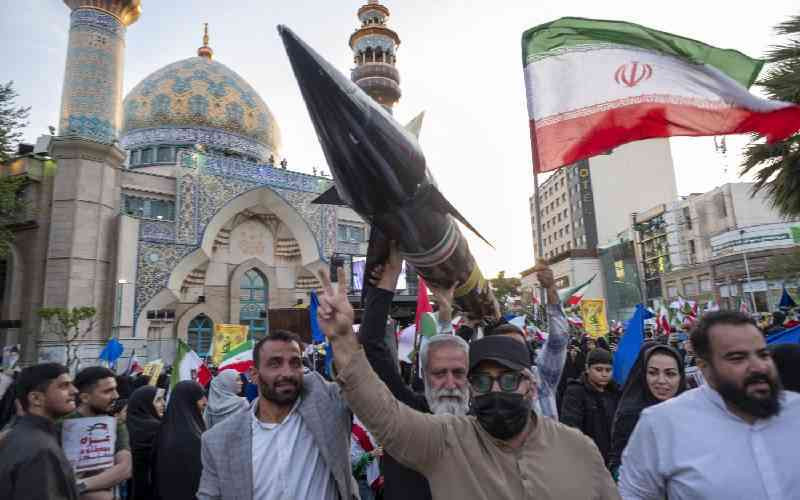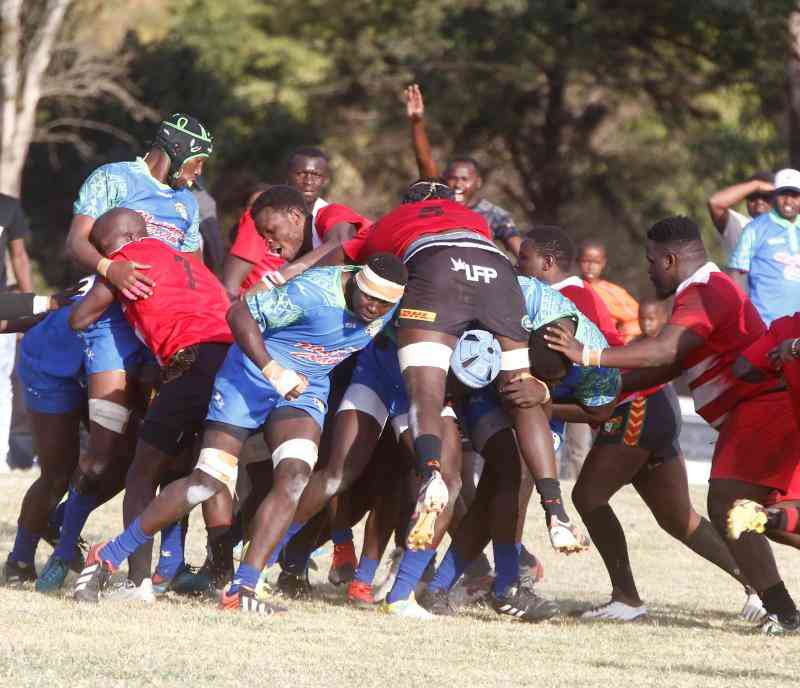By James Anyanzwa
The Geothermal Development Company (GDC) has proposed stringent regulations to oversee the sale of steam wells to private investors seeking to set up power plants in the country.
The new rules are meant to curb the spread of unscrupulous power producers who may be waiting in the wings to profiteer from cheaply procured steam rather than pass the benefits to consumers.
The guidelines include limiting the number of steam wells available to every single investor in order to limit any would-be monopolistic tendencies that are likely to harm consumers through price fixing.
Potential investors in the energy sector will now be required to disclose their total cost outlays and clearly demonstrate their impact on electricity tariffs.
In addition, operational efficiencies of plant machinery shall be subjected to thorough vetting in a bid to weed out investors whose obsolete machines could drive up retail electricity prices.
"What we are going to consider is how the investors’ costs will be reflected in the general tariffs. The one whose tariff will be low will definitely get the steam," said Dr Silas Masinde Simiyu, the company’s chief executive.
"Investors will be vetted in terms of the cost and efficiency of the machines."
Guarantee availability
Simiyu reckons that the new measures will certainly guarantee availability of clean, reliable and affordable power to both domestic and industrial users.
 |
Dr Silas Masinde Simiyu, Chief Executive, GDC. Photos: James Anyanzwa/Standard |
Kenyan electricity consumers are currently facing the wrath of frequent power outages and inflated power bills owing to perennial over-dependence on unreliable hydropower and diesel-generated power.
The new measures, if adopted, are expected to streamline the geothermal energy sector ahead of the company’s projected production of the first batch of steam in October next year.
"By October next year, we will start the process of selling steam to our first clients," says Simiyu.
The new laws shall direct the entire tendering and procurement process of steam wells to ensure investors in the energy sector only earn profits due to them.
Stay informed. Subscribe to our newsletter
Simiyu says GDC’s steam wells would only be sold to qualified bidders through an open tendering system.
"Our goal is to accelerate the generation of low cost electricity that can be used to increase productivity of our people and make them self-reliant," he says
"We want to produce as much steam as possible in order to cut down electricity prices. This has been proven in Philippians and Indonesia."
Simiyu was speaking at a media workshop on Geothermal Development in Nakuru last week.
Development of geothermal energy in Kenya started in the 1970s but the capacity to harness the resource has been wanting.
Although the country’s potential in geothermal power is estimated at 7550MW, this resource has been lying idle for ages with the sector contributing a mere 167MW to the national grid.
Over-reliance on erratic hydropower and emergency power from diesel-driven generators has pushed power bills through the roof, rendering the country an expensive destination to the investors in terms of the cost of doing business.
Cut prices
Geothermal energy in the world accounts for over 8,000MW of electric power generated in 21 countries. It is expected the development of geothermal in Kenya will bring down prices of electricity and increase demand.
Kenya has an installed power capacity of about 1300 MW with geothermal constituting a paltry 14 per cent (167MW) but with utilisation of 22 per cent.
GDC plans to drill a total of 560 steam wells in the next 10 years with steam capacity estimated at over 2,200MW.
To achieve this, the company requires a constant and reliable annual budget of at least US$260million (Sh20 billion).
The Government has so far agreed to guarantee Sh10 billion annually while the French Development Agency (AFD) has committed 60 million Euros (Sh6.4billion).
GDC is also in the process of negotiating with other donors and multilateral lending agencies for funding.
The international development partners and financiers that have shown interest in funding the project include the Japanese International Cooperation Agency (JICA), AfD, French Government, US Department of Trade and Development, KfW (Germany), European Investment Bank (EIB), Export-Import (Exim) World Bank and the Green Energy Fund.
The Green Energy Fund has pledged US$600 million towards the project. GDC hopes to drill 36 steam wells at Olkaria IV and II in order to provide steam to KenGen with six steam wells expected to be complete by June.
"We want to encourage local people to participate," says Simiyu, also trained Seismologist.
Simiyu believes that although the country suffers from inadequate and expensive power, the economy has the capacity to generate enough power from steam to offset the growing demand.
The GDC’s Geothermal Early Generation (GEG) concept is specifically designed to reduce the gestation period for geothermal power generation from seven years to just less than a year and cut the unit cost of power generation by 50 per cent.
"The disincentive is that it takes a very long time to put up a power plant for geothermal. It takes seven years of continuous investment. This is the convention we want to change with our new approach," says Simiyu.
The new method which has also been applied in the US and Mexico, involves wellhead portable generators designed to instantaneously convert steam into power.
GDC will facilitate the generation of at least 200MW every year using wellhead units while inviting other players to put up conventional power plants.
In this arrangement, excess electricity will even be sold to regional power purchasers like East African Power Pool (EAPP).
Transmission lines
The power distributors Kenya Power and Lighting Company (KPLC) and Kenya Electricity Transmission Company (Ketraco) are expected to be the off-takers of generated geothermal power.
The Government plans to construct power transmission lines along the axis of the Rift passing through Lake Turkana, Lake Baringo, Lake Naivasha, Suswa and Lake Magadi to aid in transmission of generated power.
Detailed exploration for geothermal power has been concentrated around volcanic lines in the rift valley.
Initial studies have indicated there are some 14 high potential geothermal sites running along the Rift Valley, which is at the centre of volcanic activities.
These sites are found in Olkaria domes, Longonot, Suswa, Menengai, Badlands, Lake Magadi, Arus, Lake Bogoria, Paka, Silali, Emuruangongolak, Namarunu and Barrier Volcano.
Dr Simiyu, a renowned geothermal expert says geothermal is the way for this country.
"Power rationing will in fact be a thing of the past," he says.
While obtaining geothermal power is expected to take one year, the cost of generating 1MW of power from steam will also drop to $1.5 million from $3 million.
GDC hopes to pass on the gains to consumers by selling its power to KPLC at discounted rates of between 4-5 US cents per kWh
Currently, KPLC sells its power to the consumers at about 9 US cents per Kwh owing to expensive power procured from emergency diesel power generators at a massive 17 US cents per Kwh.
This high electricity rates have had serious effect on the economy. Several industries have relocated to South Africa and Egypt.
Although the Government has been subsidising part of KPLC’s power purchase cost, the electricity tariffs have remained excessively high.
Electricity tariffs
Exploiting geothermal energy requires heavy initial capital investment, a factor that has scared off some investors. The cost of drilling one well generating 5MW of power is estimated at $6.5 million with a power plant gestation period of seven years.
But the Government has committed itself to meeting the initial capital for developing steam fields, thereby meeting the upstream risks and making investment in the geothermal sector attractive.
In a bid to attract investors in the geothermal development, the company will take care of all the licensing processes, manage steam reservoirs and enter into steam-electricity conversion agreements with investors.
GDC is 100 per cent State-owned registered under the Company’s Act to develop geothermal resources in Kenya.
The company’s mandate is to facilitate faster geothermal development in the country; explore, drill, appraise and develop geothermal resources.
GDC is also expected to support and promote development of other direct uses of geothermal resources.
In the event that no investor is available, GDC will set up the power plants and then feed the power to the national grid.
 The Standard Group Plc is a
multi-media organization with investments in media platforms spanning newspaper
print operations, television, radio broadcasting, digital and online services. The
Standard Group is recognized as a leading multi-media house in Kenya with a key
influence in matters of national and international interest.
The Standard Group Plc is a
multi-media organization with investments in media platforms spanning newspaper
print operations, television, radio broadcasting, digital and online services. The
Standard Group is recognized as a leading multi-media house in Kenya with a key
influence in matters of national and international interest.
 The Standard Group Plc is a
multi-media organization with investments in media platforms spanning newspaper
print operations, television, radio broadcasting, digital and online services. The
Standard Group is recognized as a leading multi-media house in Kenya with a key
influence in matters of national and international interest.
The Standard Group Plc is a
multi-media organization with investments in media platforms spanning newspaper
print operations, television, radio broadcasting, digital and online services. The
Standard Group is recognized as a leading multi-media house in Kenya with a key
influence in matters of national and international interest.









